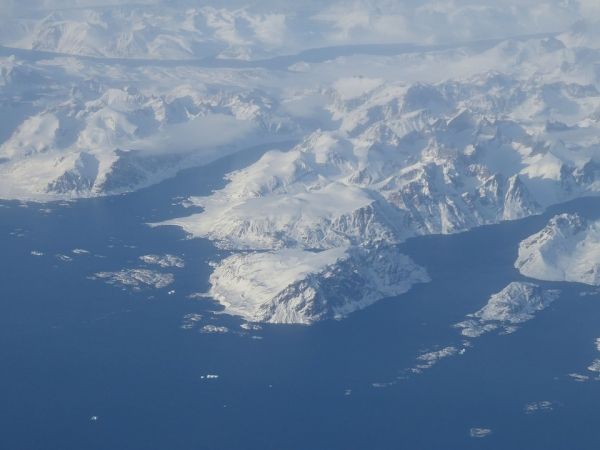When Jason Gulley steps off the plane Thursday in Ilulissat, Greenland, he’ll be packing rubber waders along with his down parka and cold-weather sleeping bag. The region is experiencing a massive heat wave right now—the same one that hit Europe last week—with some areas expected to top 73 degrees Fahrenheit. This temporary mass of hot air is also turning the frozen surface of the ice sheet that covers the continent into patches of slush (spring skiing, anyone?). The meltwater forms rivers and lakes, and then drains into subterranean channels that dive from the surface thousands of feet down to the base of the ice sheet, where it meets bedrock.
As a glaciologist who studies the plumbing system of Greenland’s ice sheet, Gulley is one of the foremost explorers of these melt caves, called moulins. And with the near-record melting this week, the moulins will be roaring like icy waterfalls. “It will be interesting to see how the ice sheet responds to the meltwater inputs,” Gulley said before leaving this week. “We're likely to see a short-lived increase in ice velocity as subglacial water pressure is increases.” In plain English, that means the ice sheet will get more slippery this week, like an ice cube sitting on a warm counter. It will slide toward the ocean, where big chunks of it will break off as icebergs.
Gulley, a geoscientist at Florida State University, is in Greenland to pick up and bring home 12,000 pounds of scientific monitoring equipment at a remote field camp on the southeastern edge of the ice sheet. He and his colleagues have spent the past three summers on the ice exploring the moulins with remote instruments, using bags of brightly colored tracer dye that they throw into the water and then film using a drone flying overhead. They’ve also pushed the limits by rappelling directly into the caverns to find out where all that meltwater is going. Gulley and an ice climbing specialist, Will Gadd, even trained to dive into one of these meltwater-filled rooms during an expedition sponsored by Red Bull last fall, but the conditions were too dangerous (see their adventures here).
Read more at Wired
Photo credit: Petra4711 via Pixabay


